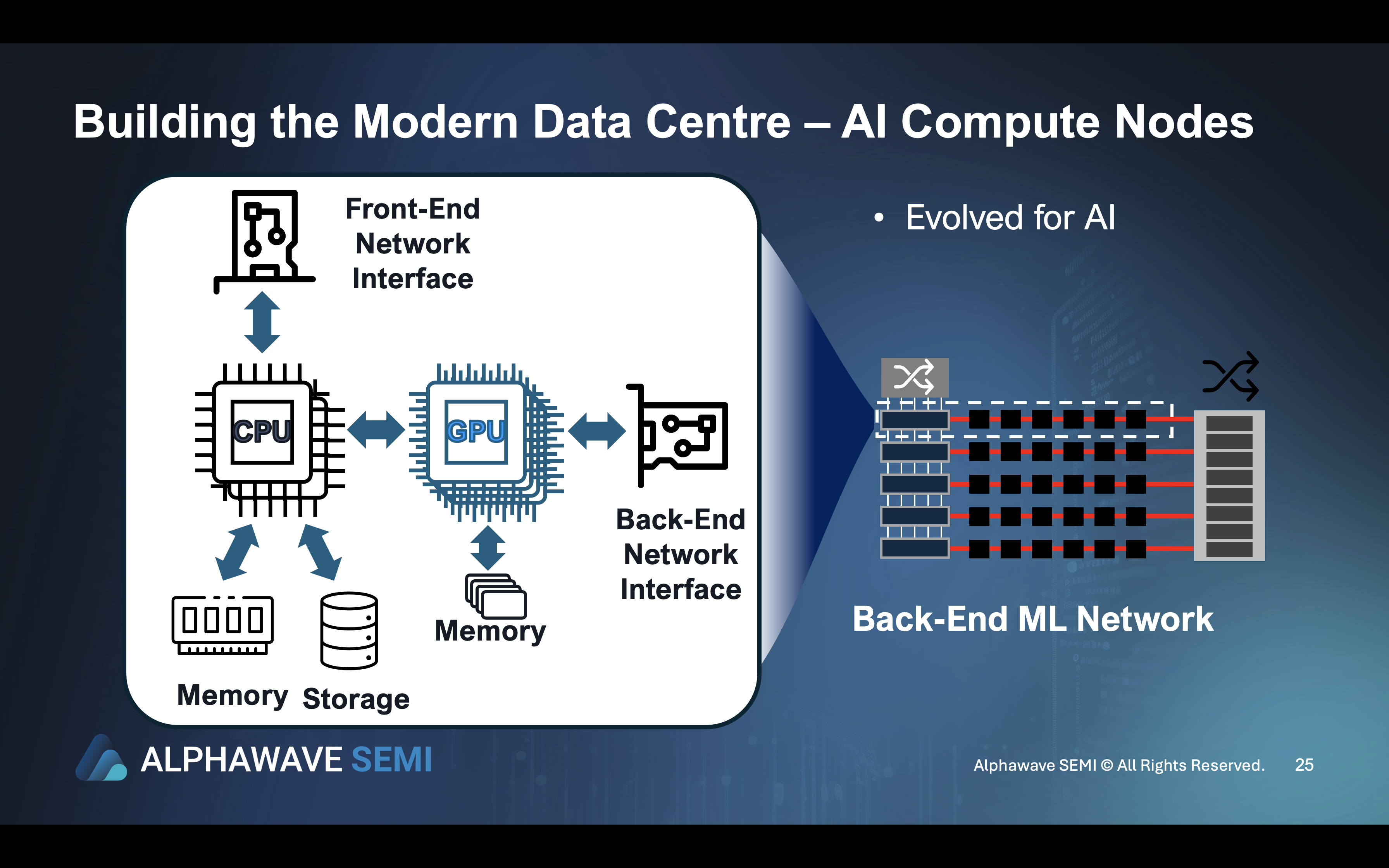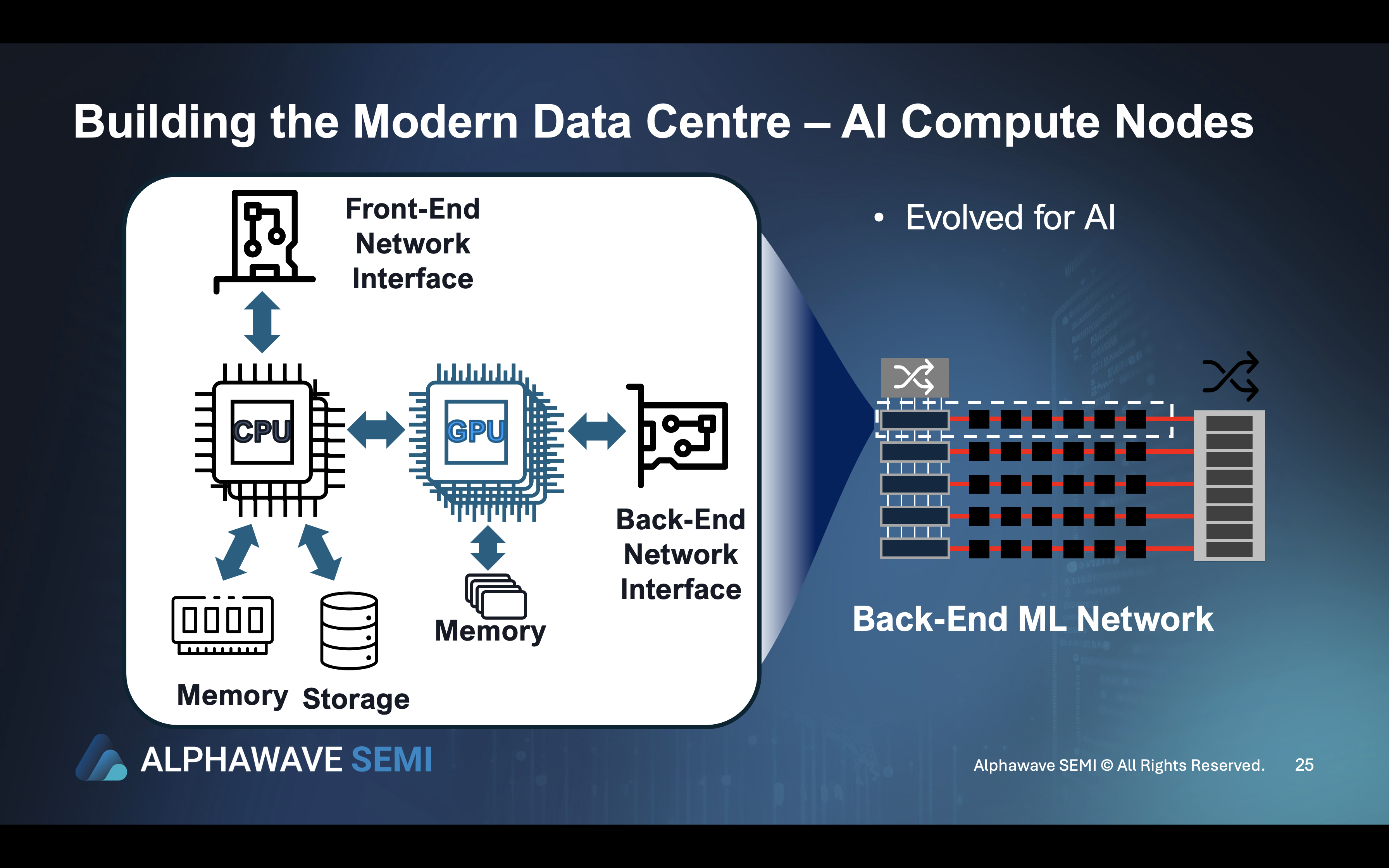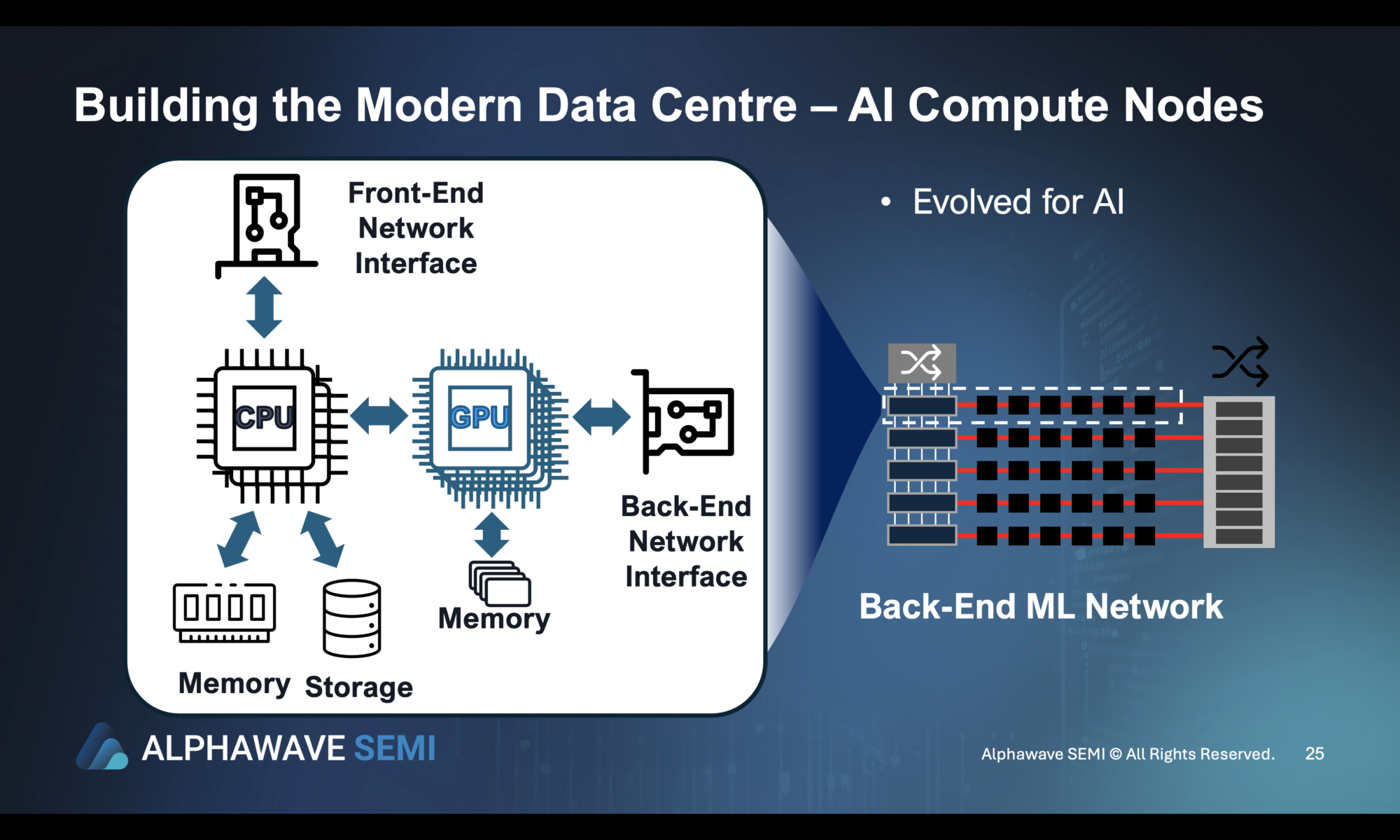Artificial intelligence (AI) has revolutionized data center infrastructure, requiring a reimagining of computational, memory, and connectivity technologies. Meeting the increasing demand for high performance and efficiency in AI workloads has led to the emergence of innovative solutions, including chiplets, advanced interconnects, and optical communication systems. These technologies are transforming data centers into scalable, flexible ecosystems optimized for AI-driven tasks.
Alphawave Semi is actively advancing this ecosystem, offering a portfolio of chiplets, high-speed interconnect IP, and design solutions that power next-generation AI systems.
Custom Silicon Solutions Through Chiplets
Chiplet technology is at the forefront of creating custom silicon solutions that are specifically optimized for AI workloads. Unlike traditional monolithic chips, chiplets are modular, enabling manufacturers to combine different components—compute, memory, and input/output functions—into a single package. This approach allows for greater customization, faster development cycles, and more cost-effective designs. The Universal Chiplet Interconnect Express (UCIe) is a critical enabler of this innovation, providing a standardized die-to-die interface that supports high bandwidth, energy efficiency, and seamless communication between chiplets. This ecosystem paves the way for tailored silicon solutions that deliver the performance AI workloads demand, while also addressing power efficiency and affordability.
Scaling AI Clusters Through Advanced Connectivity
Connectivity technologies are the backbone of scaling AI clusters and geographically distributed data centers. The deployment of AI workloads in these infrastructures requires high-bandwidth, low-latency communication between thousands of interconnected processors, memory modules, and storage units. While traditional Ethernet-based front-end networks remain critical for server-to-server communication, AI workloads place unprecedented demands on back-end networks. These back-end networks facilitate the seamless exchange of data between AI accelerators, such as GPUs and TPUs, which is essential for large-scale training and inference tasks. Any inefficiency, such as packet loss or high latency, can lead to significant compute resource wastage, underlining the importance of robust connectivity solutions. Optical connectivity, including silicon photonics and co-packaged optics (CPO), is increasingly replacing copper-based connections, delivering the bandwidth density and energy efficiency required for scaling AI infrastructure. These technologies enable AI clusters to grow from hundreds to tens of thousands of nodes while maintaining performance and reliability.


Memory Disaggregation for Resource Optimization
AI workloads also demand innovative approaches to memory and storage connectivity. Traditional data center architectures often suffer from underutilized memory resources, leading to inefficiencies. Memory disaggregation, enabled by Compute Express Link (CXL), is a transformative solution. By centralizing memory into shared pools, disaggregated architectures ensure better utilization of resources, reduce overall costs, and improve power efficiency. CXL extends connectivity beyond individual servers and racks, requiring advanced optical solutions to maintain low-latency access over longer distances. This approach ensures that memory can be allocated dynamically, optimizing performance for demanding AI applications while providing significant savings in operational costs.
The Emergence of the Chiplet Ecosystem
A thriving chiplet ecosystem is emerging, fueled by advances in die-to-die interfaces like UCIe. This ecosystem allows for a wide variety of chiplet use cases, enabling modular and flexible design architectures that support the scalability and customization needs of AI workloads. This modular approach is not limited to high-performance computing; it also has implications for distributed AI systems and edge computing. Chiplets are enabling the creation of custom compute-hardware for edge AI applications, ensuring that AI models can operate closer to users for faster response times. Similarly, distributed learning architectures—where data privacy is a concern—rely on chiplet-based solutions to train AI models efficiently without sharing sensitive information.
Summary
AI is redefining data center infrastructure, necessitating solutions that balance performance, scalability, and efficiency. Chiplets, advanced connectivity technologies, and memory disaggregation are critical enablers of this transformation. Together, they offer the means to scale AI workloads affordably while maintaining energy efficiency and reducing time-to-market for new solutions. By harnessing these innovations, data centers are better equipped to handle the demands of AI, paving the way for more powerful, efficient, and scalable computing solutions.
- Chiplet technology enables tailored silicon solutions optimized for AI workloads, offering affordability, lower power consumption, and faster deployment cycles.
- Optical communication technologies, such as silicon photonics and co-packaged optics, are vital to scaling AI clusters and distributed data centers.
- Memory disaggregation via CXL maximizes resource utilization while reducing costs and energy consumption.

Learn more at https://awavesemi.com/
Also Read:
How AI is Redefining Data Center Infrastructure: Key Innovations for the Future
Elevating AI with Cutting-Edge HBM4 Technology
Share this post via:






Comments
There are no comments yet.
You must register or log in to view/post comments.